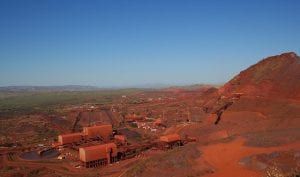
The Australian-founded and managed tidal energy company Atlantis Resources has claimed a world record production output for a tidal stream power station from its facility in Scotland’s Pentland Firth.
Atlantis late last week said it had produced 700MWh of electricity in August, taking its total production to 2GWh. It’s not a huge amount of power – the month of August was about enough to power up to 2,000 homes – but it’s a big deal in the tidal energy industry.
“The production performance from the installed turbines on the MeyGen project has been very good,” said David Taaffe, the director of project delivery at Meyden, the company’s main tidal energy project.
“With yet another successful installation campaign expertly completed this week by the Atlantis operations team, we expect to continue to break records throughout the rest of the year generating both predictable power and revenue.”
Atlantis was founded in Australia a decade ago, and then shifted to Singapore to attract investment funds, and then to Edinburgh to be close to its major projects, which are all in the UK.
Its senior management, including CEO Tim Cornelius, newly appointed CFO Andrew Dagley and its head of turbine and engineering services Drew Blaxland are all Australian – and so are half the board of directors.
The Meygen project is the largest tidal stream energy project in the world and – like Carnegie Clean Energy’s wave energy project off Western Australia – it is the first with multiple machines.
The technology is described by Atlantis as like wind turbines under water. Indeed, they are piggy-backing on some of the big developments in offshore wind energy design, and technology pioneered by the subsea oil and gas industry, where the likes of Cornelius worked previously.
The company says tidal power projects are typically located close to the shore, so most of the expensive power conditioning equipment is located safely in the onshore substation. Tidal turbines rotate very slowly, so pose no threat to marine life whilst in operation, and are programmed to turn and face into the tide.
Atlantis says the potential is there to produce 20 per cent of the UK’s electricity needs. In Australia, the Australian Renewable Energy Agency in July said it had part-funded a $5.85 million project to assess and map the tidal energy resources in Australia.
So far, four 1.5MW turbines have been installed as part of MeyGen’s “deploy and monitor strategy”, and will act as a precursor to the development of an 86MW project that has received consent so far, although the ultimate project size could be nearly 400MW.
The project is designed to show that the development of tidal array projects is both commercially viable and technically feasible. It is looking at up to 10,000MW of projects in Canada, China, India and Indonesia, as well as those in the UK.
The company is listed on the London AIM Stock Exchange but its principal financial backer has been global investment bank Morgan Stanley.
Cornelius said earlier this month that the world’s largest tidal power array was continuing to set milestones. “It’s extremely rewarding for all those involved to see the fruits of our collective passion and labour continuing to deliver.”








